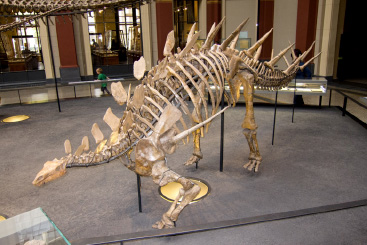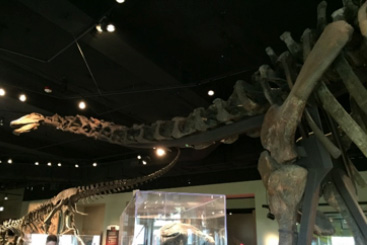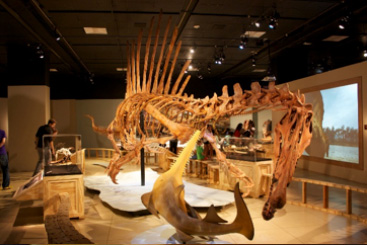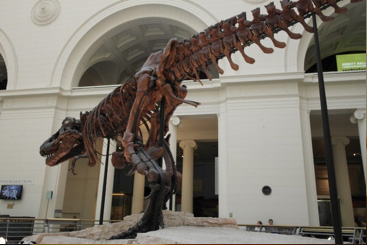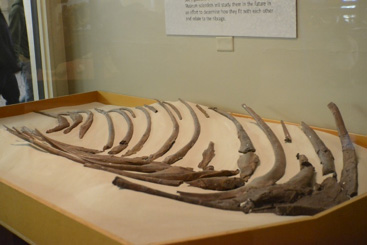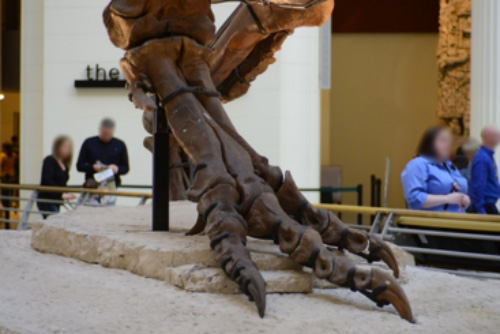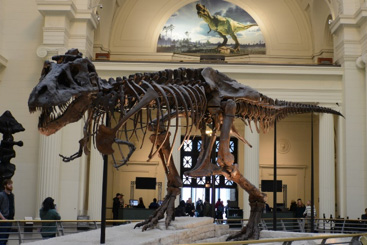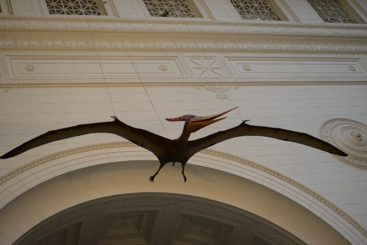Stegosaurus
(Photo courtesy of Flickr.com: Thomas Quine) Their predators were afraid of them b/o their tails with spikes. Their rail-way shaped hip/pelvis structure limited quick turns. In order to turn to accelerate, the striking force needed a balance control through the plates on the back.
Brontosaurus
(Photo courtesy of SJ Cho, PhD) Getting blood to their brains? No problem. They used Bernoulli’s principle during hepatic-pump ventilation. They had cervical ribs to prevent airway collapse. Their long tails can whip/eviscerate predators. They need to be in herds.
Spinosaurus
(Photo courtesy of Flickr.com: Mike Bowler) It is unique b/o the sails. It made quick turns with its long head and neck to catch prey. The sails were needed to control turning by using air-resistance for the lack of pelvic mobility, like the fletching of an arrow. It lived on marsh land.
Hip/Pelvis of Dinosaurs
They have a ‘train-on-rail’ appearance. The hip/pelvis bone is for weight support during hopping in a manner very similar to kangaroos. It is completely different from lizards/mammals. However, it limits quick direction change.
Gastralia
(photo courtesy of SJ Cho, PhD) Very important bones to prevent abdomen from collapsing to keep the airway/air-sacs during hepatic-pump ventilation. Hepatic-pump like a piston movement will be assisted by psoas/caudofemoralis muscles during hip extension.
Arctometatarsalian
(Photo courtesy of SJ Cho, PhD) The top portion of the middle metatarsal is wedge-shaped for force spread during running (hopping). Talons are for securing ground-friction w/ speed, possibly for attack. Their longer toes are for acceleration.
Tragic Death of ‘Sue’ the T-Rex
Sue might have been hit by the tail of stegosaurus. The heavy impact from ramming speed of Sue and spinning/acceleration of the tail of stegosaurus would be similar to a slamming a baseball by a hitter. Changes similar to ‘crushed soda-can’. Dimples along the teeth-base can protect the roots of teeth upon ramming.
T-Rex
(Photo courtesy of SJ Cho, PhD) They cruised like airplanes. They had big, heavy heads for directional control; like a spear-head. They also had small arms for steering at fast speed. Their toes were for ground traction, and their gastralia bones were for ventilation/hepatic pump. They rammed into prey. Because of the balance matter of [...]
Pterodactyl
(Photo courtesy of SJ Cho, PhD) Did they fly like birds? No way. Did they jump like grasshoppers? Of course. They would jump and glide with grace. They thrived in shallow water or marsh lands. Their large heads helped with jumping.

